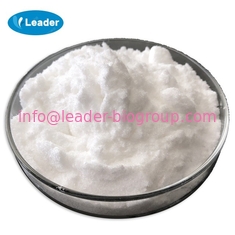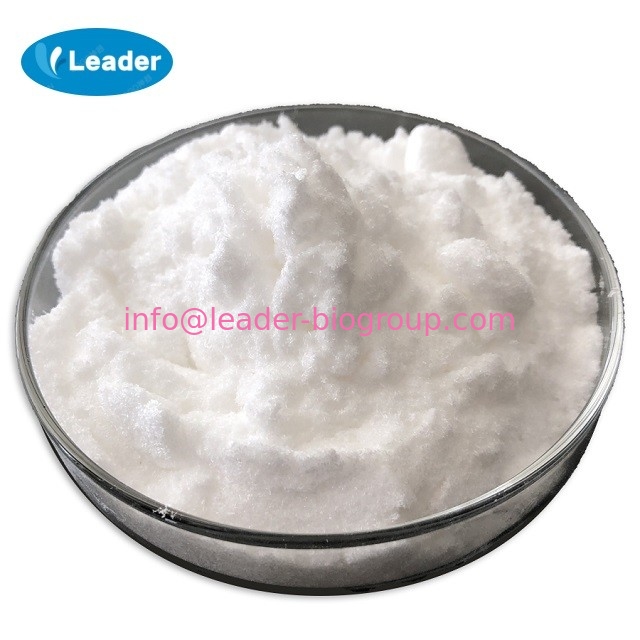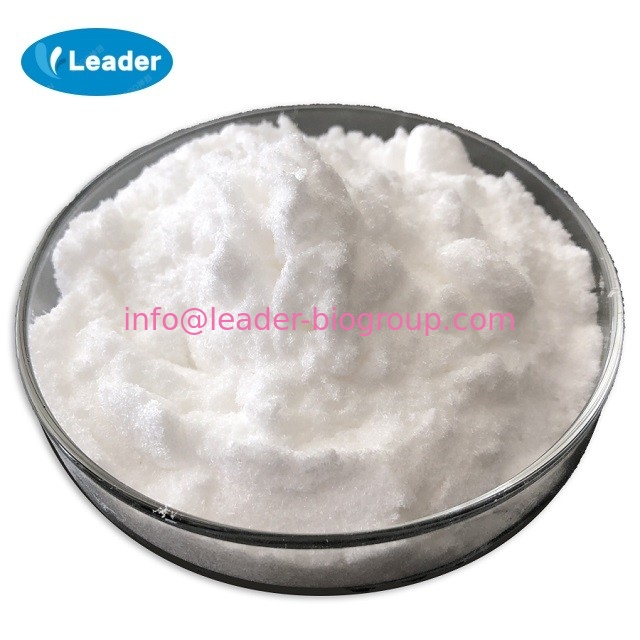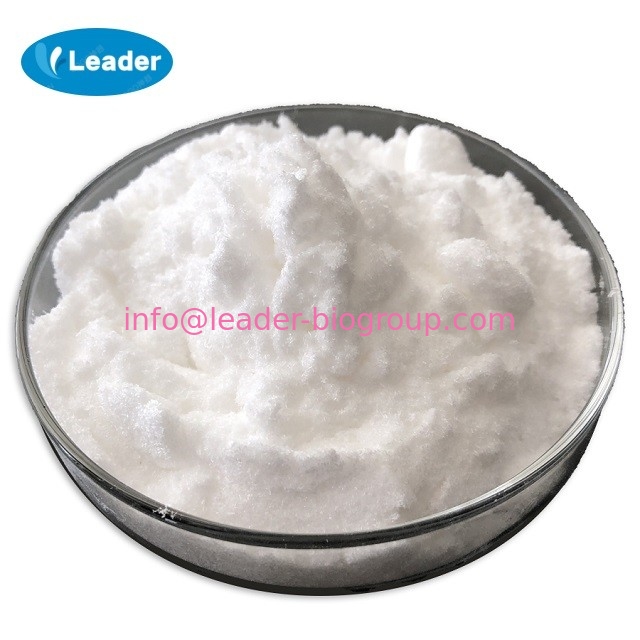
China biggest Manufacturer Factory Supply D-Isoascorbic Acid CAS 89-65-6
-
Purity99.9%
-
UseHealth Care
-
OriginChina
-
Package25KG/Drum
-
ManufacturerXI'AN LEADER BIOCHEMICAL ENGINEERING CO.,LTD
-
Place of OriginCHINA
-
Brand Nameinfo@leader-biogroup.com
-
CertificationISO,GMP,SGS,HALA,KOSER,HACCP
-
Model NumberLD
-
Minimum Order Quantity25KG
-
PriceNegotiate Depend on order quantity
-
Packaging Details25KG/Drum
-
Delivery Time2-3 working days
-
Payment TermsWestern Union, MoneyGram, T/T, L/C
-
Supply Ability10MTS/Month
China biggest Manufacturer Factory Supply D-Isoascorbic Acid CAS 89-65-6
Inquiry email: info@leader-biogroup.com
Hot Line +86-029-68895030
+86-029-68569961
+86-029-68569962
Fax +86-029-68895030
| Product Name: | D-Isoascorbic Acid |
| Synonyms: | 2,3-didehydro-d-erythro-hexono-1,4-lactone;FEMA 2410;ISOASCORBIC ACID;ISOVITAMIN C;3-keto-d-erythro-hexonicacigamma-lactone;araboascorbicacid;d-arabino-ascorbicacid;d-erythro-3-ketohexonicacidlactone |
| CAS: | 89-65-6 |
| MF: | C6H8O6 |
| MW: | 176.12 |
| EINECS: | 201-928-0 |
| Product Categories: | Food additive;Water Ttreatment Chemicals;Sugar Acids;Vitamin Derivatives;Biochemistry;Sugars;Food and Feed Additive;Vitamins |
| Mol File: | 89-65-6.mol |
| Erythorbic Acid Chemical Properties |
| Melting point | 169-172 °C (dec.) (lit.) |
| alpha | -17.25 º (c=10, H2O 25 ºC) |
| Boiling point | 227.71°C (rough estimate) |
| density | 1.3744 (rough estimate) |
| FEMA | 2410 | ERYTHROBIC ACID |
| refractive index | -17.5 ° (C=10, H2O) |
| storage temp. | Store at 0-5°C |
| solubility | H2O: 0.1 g/mL, clear, colorless to very faintly yellow |
| form | Crystals or Crystalline Powder |
| pka | 4.09±0.10(Predicted) |
| color | White to slightly yellow |
| optical activity | [α]25/D 16.8°, c = 2 in H2O |
| Water Solubility | 1g/10mL |
| Merck | 14,5126 |
| BRN | 84271 |
| Stability: | Stable. Combustible. Incompatible with chemically active metals, aluminium, zinc, copper, magnesium, strong bases, strong oxidizing agents. |
| InChIKey | CIWBSHSKHKDKBQ-JLAZNSOCSA-N |
| CAS DataBase Reference | 89-65-6(CAS DataBase Reference) |
| EPA Substance Registry System | Isoascorbic acid (89-65-6) |
| Erythorbic Acid Usage And Synthesis |
| Chemical Properties | Erythorbic acid occurs as a white or slightly yellow-colored crystals or powder. It gradually darkens in color upon exposure to light. |
| Uses | Antioxidant (industrial and food), especially in brewing industry, reducing agent in photography. |
| Uses | Erythorbic Acid is a food preservative that is a strong reducing agent (oxygen accepting) which functions similarly to antioxidants. In the dry crystalline state it is nonreactive, but in water solutions it reacts readily with atmospheric oxygen and other oxidizing agents, making it valuable as an antioxidant. During preparation, dissolving and mixing should incorporate a minimum amount of air, and storage should be at cool temperatures. It has a solubility of 43 g/100 ml of water at 25°c. One part is equivalent to one part ascorbic acid and equivalent to one part sodium erythorbate. It is used to control oxidative color and flavor deterioration in fruits at 150–200 ppm. It is used in meat curing to speed and control the nitrite curing reaction and prolong the color of cured meat at levels of 0.05%. |
| Production Methods | Erythorbic acid is synthesized by the reaction between methyl 2- keto-D-gluconate and sodium methoxide. It can also be synthesized from sucrose, and produced from Penicillium spp. |
| Biotechnological Production | Yeasts and other fungi synthesize the C5 sugar acid D-erythroascorbic acid which shares structural and physicochemical properties with Asc. D-erythroascorbic acid serves similar protective functions in these microorganisms as Asc does in plants and animals, including the scavenging of reactive oxygen species. The biosynthesis of D-erythroascorbic acid starts from D-arabinose obtained by the microorganism from decaying plant material. D-arabinose, presumably in its 1,4-furanosidic isomeric form, is oxidized by NAD(P)+ specific dehydrogenases to D-arabinono-1,4-lactone, which is further oxidized to D-erythroascorbic acid by D-arabinono-1,4-lactone oxidase. Resting cells of Saccharomyces cerevisiae can synthesize Asc from L-galactose, L-galactono-1,4-lactone, or L-gulono- 1,4-lactone via the pathway naturally used for D-erythroascorbic acid. |
| Pharmaceutical Applications | Erythorbic acid is a stereoisomer of L-ascorbic acid, and is used as an antioxidant in foods and oral pharmaceutical formulations. It has approximately 5% of the vitamin C activity of L-ascorbic acid. |
| Safety | Erythorbic acid is widely used in food applications as an antioxidant. It is also used in oral pharmaceutical applications as an antioxidant. Erythorbic acid is generally regarded as nontoxic and nonirritant when used as an excipient. Erythorbic acid is readily metabolized and does not affect the urinary excretion of ascorbic acid. The WHO has set an acceptable daily intake of erythorbic acid and its sodium salt in foods at up to 5 mg/kg body-weight. |
| storage | Erythorbic acid should be stored in an airtight container, protected from light, in a cool, dry place. |
| Purification Methods | Crystallise D(-)-isoascorbic acid from H2O, EtOH or dioxane. is at 245nm with 7,500 (EtOH). [Reichstein et al. Helv max Chim Acta 17 510, 516 1934, Heslop et al. J Chem Soc 225 1944, Beilstein 18 III/IV 3037, 18/5 V 26.] |
| Incompatibilities | Erythorbic acid is incompatible with chemically active metals such as aluminum, copper, magnesium, and zinc. It is also incompatible with strong bases and strong oxidizing agents. |
| Regulatory Status | GRAS listed. Accepted for use as a food additive in Europe. Included in the FDA Inactive Ingredients Database (oral concentrate and tablets). |


